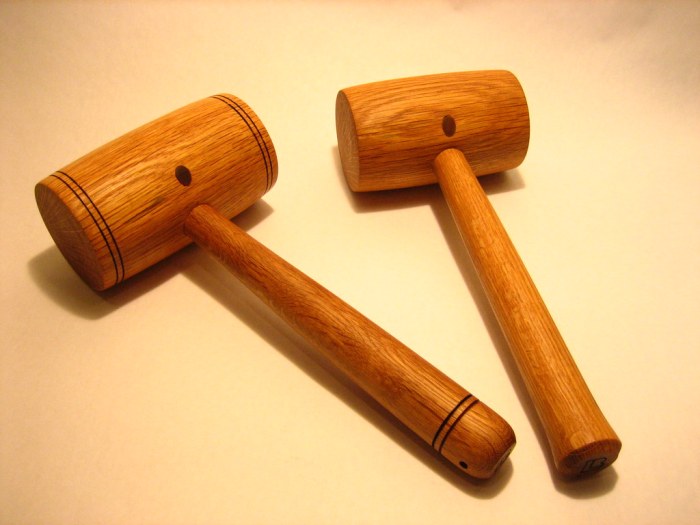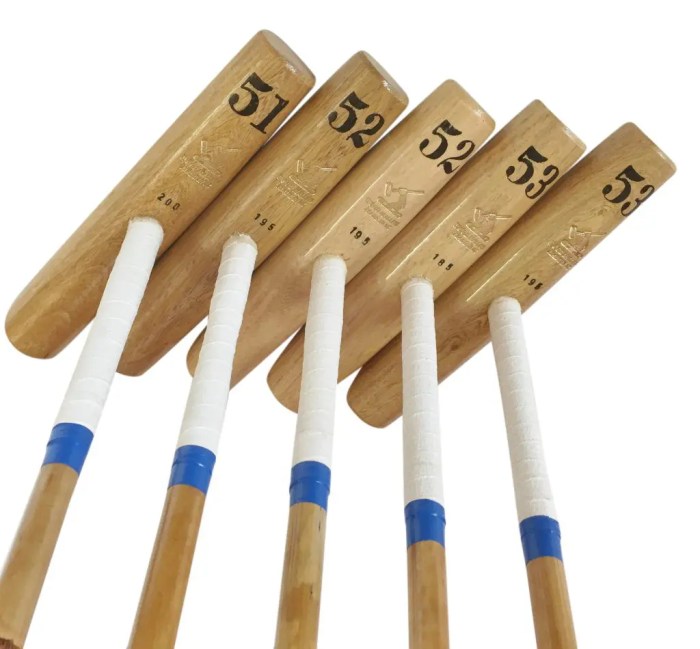Hammers used to strike percussion instruments – In the realm of percussion, hammers emerge as indispensable tools, shaping the very essence of sound. From the delicate taps on a vibraphone to the thunderous strikes of a bass drum, hammers empower percussionists to evoke a captivating tapestry of rhythms and melodies.
Delving into the world of percussion hammers, we embark on a journey that unravels their intricate designs, diverse materials, and the techniques that unlock their sonic potential. Along the way, we uncover the secrets of proper maintenance and delve into the latest innovations that continue to redefine the art of percussion.
1. Hammers Used in Percussion Instruments
An Overview
Percussion hammers are indispensable tools in the world of percussion instruments. They are used to strike the instruments’ various surfaces, producing a wide range of sounds and effects. The purpose of percussion hammers extends beyond mere sound production; they also play a crucial role in shaping the musical expression and interpretation of the performer.
Percussion hammers come in various forms, each designed to complement the unique characteristics of different percussion instruments. Understanding the different types of hammers and their specific applications is essential for percussionists seeking to master their craft.
2. Types of Hammers and Their Characteristics: Hammers Used To Strike Percussion Instruments

The table below provides a comprehensive overview of the different types of percussion hammers, their material composition, shape, and the distinct sound characteristics they produce.
| Hammer Type | Material | Shape | Sound Characteristics |
|---|---|---|---|
| Felt Hammers | Felt | Round or oval | Warm, mellow sound with minimal attack |
| Wooden Hammers | Hardwood (e.g., birch, maple) | Cylindrical or spherical | Bright, articulate sound with a clear attack |
| Rubber Hammers | Rubber or synthetic materials | Various shapes (e.g., round, oval, square) | Versatile sound, ranging from soft and muffled to hard and resonant |
| Metal Hammers | Metal (e.g., aluminum, brass) | Cylindrical or spherical | Loud, piercing sound with a strong attack and sustain |
Examples of percussion instruments that utilize these hammer types include: timpani (felt hammers), xylophone (wooden hammers), vibraphone (rubber hammers), and cymbals (metal hammers).
3. Techniques for Using Percussion Hammers

Mastering the techniques of percussion hammer usage is crucial for developing proper control and achieving the desired sound quality. The following tips and exercises provide guidance on how to hold and use percussion hammers effectively:
- Hold the hammer loosely between your thumb and forefinger, with your remaining fingers curled underneath for support.
- Keep your wrist relaxed and your arm slightly bent at the elbow.
- Strike the instrument’s surface with a fluid motion, using your wrist as the primary source of power.
- Experiment with different striking angles and velocities to produce a variety of sounds and effects.
- Practice regularly to develop coordination, accuracy, and control.
4. Maintenance and Care of Percussion Hammers

Proper maintenance and care of percussion hammers are essential to ensure their longevity and optimal performance. Here are some guidelines:
- Clean the hammers regularly with a soft, damp cloth to remove dust and debris.
- Store the hammers in a dry, temperate environment to prevent warping or cracking.
- Inspect the hammers periodically for signs of wear and tear, such as loose felt or damaged handles.
- If repairs are necessary, consult with a qualified percussion instrument technician.
5. Innovations and Trends in Percussion Hammers
The field of percussion hammers is constantly evolving, with new innovations and advancements emerging to enhance the playing experience and sound quality. Here are some notable trends:
- The use of advanced materials, such as carbon fiber and titanium, to create lightweight and durable hammers.
- The development of hammers with adjustable weight and balance to accommodate different playing styles.
- The incorporation of electronic sensors into hammers to enable triggering and sound manipulation.
FAQ Overview
What are the different types of hammers used in percussion instruments?
Percussion hammers come in a variety of types, each with its own unique material composition, shape, and sound characteristics. Common types include felt mallets, rubber mallets, wooden mallets, and metal mallets.
How should I hold and use percussion hammers?
Proper technique is essential for effective use of percussion hammers. Hold the hammer loosely, allowing for a natural rebound, and strike the instrument with a relaxed wrist and forearm. Experiment with different striking angles and velocities to achieve the desired sound.
How often should I clean and maintain my percussion hammers?
Regular cleaning and maintenance are crucial for extending the lifespan of percussion hammers. Clean the hammers with a soft cloth after each use to remove any dust or debris. Periodically inspect the hammers for signs of wear or damage, and replace them as needed.